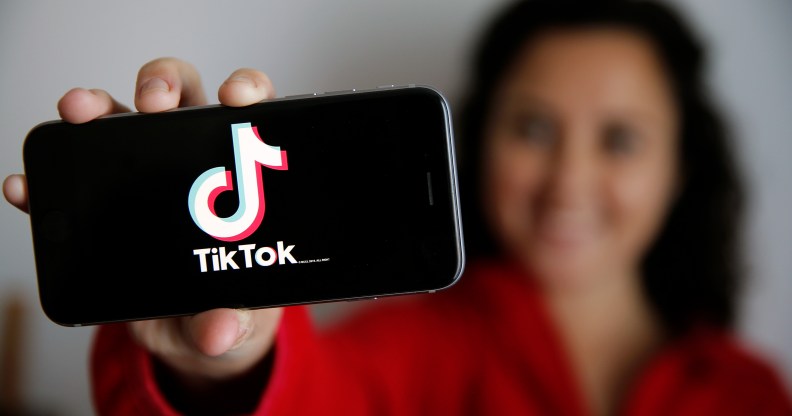TikTok insists it ‘celebrates and protects’ queer creators but apologises for censoring ‘vulnerable’ LGBT+ users

TikTok has admitted to censoring posts from users it considered “vulnerable”, including LGBT+ people and people with disabilities. (Chesnot/Getty Images)
TikTok has admitted to censoring posts from users it considered "vulnerable", including LGBT+ people and people with disabilities. (Chesnot/Getty Images)
TikTok has apologised for censoring and suppressing LGBT+ content on the social media platform, admitting: “We got that really wrong.”
In December 2019, it was revealed TikTok had censored posts by users considered “highly vulnerable to cyberbullying”, including members of the LGBT+ community.
The social media giant apologised for the “blunt and temporary” policy at the time, and has now addressed the issue in front of British parliament.
On Tuesday (September 22), Theo Bertram, director of government relations and public policy for TikTok, spoke to MPs on the digital, culture, media and sport sub-committee on online harms, and was asked about the disastrous anti-bullying initiative.
Bertram said: “I’m really sorry. We really got that wrong. This was in the early days of TikTok. It was well-intentioned by it was completely wrong.
“The idea was to avoid bullying, that it wouldn’t help going viral, those types of videos.
“But I’m pleased to say that that is certainly a thing of the past, and I do think TikTok is somewhere where body positivity, the LGBT+ community, don’t just feel protected now, but also celebrated and lifted up.”
Bertram insisted that they would only remove LGBT+ videos “in the event that we were asked to do so by law enforcement”.
Documents obtained by the German site netzpolitik.org in 2019 from an anonymous source at the Chinese-owned company showed that accounts and posts from LGBT+ people, body positivity advocates and people with disabilities were being limited in their reach, regardless of content.
The section in the moderation rules was titled: “Imagery depicting a subject highly vulnerable to cyberbullying.” It defined these “vulnerable” people as “susceptible to harassment or cyberbullying based on their physical or mental condition”.
On the list of “especially vulnerable” people whose views were restricted, a “striking number show a rainbow flag in their biographies or describe themselves as lesbian, gay or non-binary”.
TikTok has been exposed multiple times for censoring LGBT+ content.
Despite Bertram’s insistence that LGBT+ people on TikTok feel “celebrated and lifted up”, the platform has come under fire multiple other times for censoring queer content.
In 2019, TikTok was revealed to be blocking pro-LGBT+ content in some conservative countries, even if homosexuality has never been illegal there.
In attempt to provide “locally sensitive” moderation the app went substantially further than it was required to by law, banning any content that could be seen as positive to LGBT+ people – even same-sex couples holding hands.
At the time TikTok recognised “the need to do more” and claimed it was actively working with local third parties to ensure its processes are more appropriate.
More recently, in September 2020, the Australian Strategic Policy Institute (ASPI) found that TikTok was censoring the hashtags “gay”, “lesbian”, and “transgender” in Russian, Estonian, Bosnian, and Arabic, the terms “I am a gay/lesbian” in Russian, and “transgender” and “transitioning” in Arabic. This affected global users no matter where in the world they live.
The social media platform quietly restricted the content under a “shadow ban”, a stealth form of censorship in which a user may not be aware that they are being censored.
In response to the report, a TikTok spokesperson claimed the social media platform is “deeply committed to inclusivity” and denied it was practicing censorship. They said the shadow ban was a “localised” approach to moderation.
The spokesperson claimed some terms “were partially restricted due to relevant local laws”, while “other terms were restricted because they were primarily used when looking for pornographic content”, but added that they were “conducting a review of those terms that were moderated in error”.

